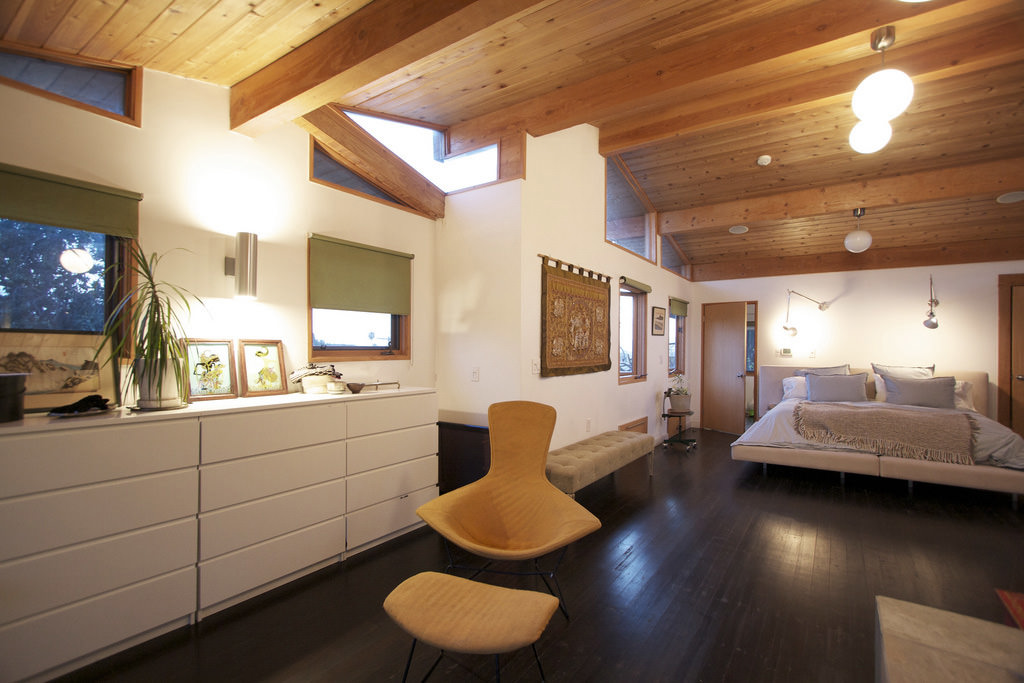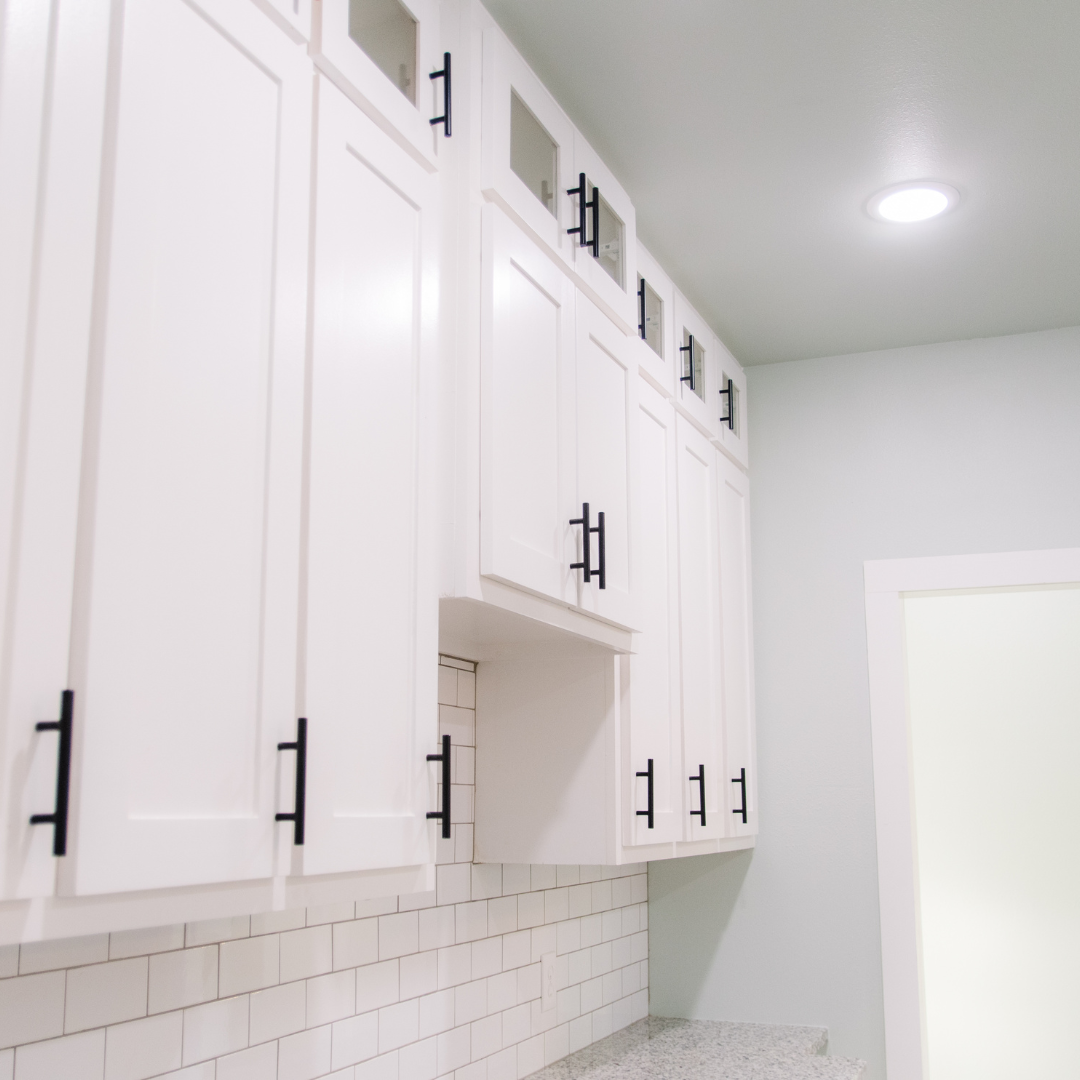Product Care & FAQ
Cabinets Product Care
Caring for Your Cabinets
Primera’s cabinetry is made from real wood and is finished with a high quality lacquer coating that provides optimum protection and requires minimum care. Only occasional maintenance is needed to retain their natural beauty and keep them looking new.
Wiping with a damp (not wet) soft cloth, followed by a dry, lint free, soft cloth will preserve the natural beauty of the finished surface, while removing most household dust or stains. Abrasive cleaners and scouring pads, which can scratch the surface, should not be used. Paste waxes, household polishes, and solvent-based cleaners should also be avoided. These products will leave a residue, which will build up over time and eventually alter the original luster and sheen of the finish. For more stubborn stains, a solution of mild detergent (liquid soap) and water can be wiped on and gently rubbed using a damp (not wet) soft cloth and then dried thoroughly.
If the surface coating has been compromised, it is only necessary to lightly scuff the area with fine sandpaper, then apply a thin coat of touch-up lacquer to restore the protective top coating. If any of the color has been removed a touch up stain should be applied before top coating.
To keep your cabinets looking new:
Wipe all spills and moisture immediately
Keep cabinet surfaces clean and dry
Never allow cabinet surfaces to be in prolonged contact with strong acids, alkalis, or water.
Countertops FAQ/Product Care
Caring for Your Countertops
Primera’s countertops are designed to be tough, low-maintenance and beautiful. In most cases, a little soap and water or a mild detergent are enough to keep your countertops clean and maintain their luster. For stubborn stains, try a nonabrasive cleaner like Soft Scrub Liquid Gel or Method Daily Granite Surface Wipes. Dried, stuck-on item such as food or paint can be scraped off using a plastic putty knife.
Always use a nonabrasive, non-acidic cleaner and wipe in a circular motion to avoid dulling your countertops, and remember to rinse with clean water after using any cleaning product.
Natural stone countertops should be sealed to prevent them from staining. Immediately wipe up spilled liquids to keep them from penetrating the surface.
When cutting or chopping food, Primera recommends using a cutting board to prevent dulling your countertops. Always avoid applying harsh chemicals, excessive force or thermal shock to keep your countertops looking their best.
Countertops FAQ
Q: What is natural stone and why is it a good material for countertops?
A: Natural stone is one-of-a-kind art from nature, and no two pieces are alike. Natural stone countertops are durable, scratch-resistant and heat-resistant, which make them a great material for kitchen countertops.
Q: Where can I use natural stone in my home?
A: Natural stone, such as granite, limestone and marble, can be used pretty much anywhere in the home, including kitchen countertops, bathroom vanities, backsplashes, flooring and patios.
Q: Why do so many people prefer granite for their kitchen countertops?
A: Granite is a popular choice for kitchens because of its durability and natural scratch-resistant qualities. Granite is one of the densest and hardest natural stone materials, which makes it a great choice for the daily wear and tear kitchens are known for.
Q: What is engineered stone and how does it differ from natural stone?
A: Engineered stone is comprised of millions of particles of crushed stone that is bonded together by a substance called polymer resin, a clear product that, when hardened, creates a thick glossy coating. Engineered stone is water-resistant, fade-proof and extremely durable, but lacks the unique fingerprint of natural stone pieces which are formed by the earth.
Q: What kind of countertop material should I use in my home?
A: That depends on what rooms or areas you are looking at, how much traffic they receive and what kind of style you want. Each type of stone has strengths and weaknesses – some are harder, some are glossier, some materials, like limestone, fare better in low-traffic areas. Primera’s experts can help you determine which type of countertops will work best for you or your client’s lifestyle.
Q: What is CaesarStone and what makes it a good choice for countertops?
A: CaesarStone is a unique mixture of ground quartz aggregates, pigments and polymers and it is heat, scratch and stain resistant, making it a perfect material for kitchen and vanity tops, as well as tubs, walls and more.
Q: What is Vetrazzo and how does it compare to granite?
A: Vetrazzo is a line of exquisite surface materials crafted from over 85% recycled glass. Vetrazzo surfaces are smooth, like highly polished granite, and it is comparable in strength, durability and maintenance to granite. One key difference between granite and Vetrazzo is that Vetrazzo is made entirely in the U.S. and is one of the most environmentally friendly surface materials on the market.
Flooring FAQ/Product Care
Caring for Your Flooring
Resilient Flooring
Resilient flooring should be cleaned on a regular basis. Grit particles have an abrasive effect on the floor’s surface; these particles make thousands of small cuts that dull the surface of the floor. By sweeping or vacuuming the floor regularly, daily if necessary, you can prevent surface wear and damage to the flooring.
Clean occasionally with a mild solution and soft mop. Do not use detergents , soaps, and harsh chemicals and avoid flooding the surface. Waxing too often causes the polish to build up and creates a dull, yellow surface. To avoid this, apply polish only when needed and only to those areas that receive the most wear.
Wood Flooring
Sweep or vacuum regularly since built-up grit can damage the surface of the wood. The vacuum head must be a brush or felt type. Be certain the wheels of the vacuum are clean and do not damage the finish. DO NOT USE A VACUUM WITH A BEATER BAR HEAD.
Remove spills promptly using a soft cloth and cleaning products recommended by the manufacturer. NEVER wet-mop, damp-mop, or flood your floor with water or other products. This can severely damage the flooring and will void the warranties. The use of Dry Swiffer® by Proctor & Gamble, or other similar product, is highly recommended. The use of manufacturer-approved maintenance and floor-care products, including but not limited to BonaX Swedish Formula Hardwood Flooring Cleaner and Basic Coating Squeaky Hardwood Floor Cleaner, is highly recommended.
IMPORTANT: Do not use oil soaps, liquid or paste wax products or other household cleaners that contain lemon oil, tung oil, silicon or ammonia since these warranties do not cover damage caused by non-recommended products. Use of these and other such products will harm the long-term performance of your floor and may also affect its recoat ability.
Keep pets’ nails trimmed, and paws clean and free of dirt, gravel, grease, oil, and stains.Place protective pads beneath furniture legs and feet to reduce scratches and dents and protect floors with rugs or plywood when moving heavy objects. Use area rugs in high traffic areas to prevent dents and scratches.
Exposure to the sun and its UV rays accelerates the oxidation and aging of wood and fabrics. This causes the stain and/or wood to fade and/or to change color. We recommend that you rearrange rugs and furniture periodically so the floor ages evenly. These warranties do not cover damage from the sun and its UV rays.
Tile Flooring
Regularly sweep or vacuum tile floors to keep sand and grit from dulling the surface. Clean with a mild detergent and a soft mop, making sure to change the water frequently to avoid mopping dirty water back onto the tile.
To keep your grout looking clean and new, make a paste from baking soda and water and apply this to the stained grout. After letting this paste sit overnight or for at least 8 hours, scrub with a nylon (not metal) brush to remove the stain.
Carpet
A regular vacuuming routine will prevent dirt from becoming ingrained into your carpet and is the best bet to keep carpet looking new. To avoid pile crushing, occasionally move heavy items around the room, if possible. If furniture has casters or rollers, make sure these are designed for carpet, otherwise they can cause damage.
Protect your carpet from fading and sun damage by installing blinds, shades or awnings over your windows.
To protect high traffic areas from staining, place an area rug on top of the carpet. If this is your choice, make sure that you clean and restore the pile of the rugs and the area underneath regularly. Be aware that the color in some rugs can bleed through and dye the carpet underneath. So make sure to check for colorfastness when choosing a rug. Also, allow your carpet and your rugs to dry completely after a cleaning before placing the rug back in its place.
To spot clean, use a commercial cleaner specifically designed for your type of carpet.
Flooring FAQ
Q: What is the difference between laminate, engineered and solid wood flooring?
A: Laminate is pressed particle board with a photograph of wood applied to the surface. Laminate flooring contains NO actual wood. It can be installed almost anywhere, using a click together or glue installation.
Solid wood flooring is generally a 3/4” thick solid piece of wood. It can be installed on or above grade by a staple or nail down application.
Engineered wood flooring is made up of layers of real wood veneers. The graining of each layer runs in the opposite direction of the layer above and below it, thus acting as a check and balance system, keeping the wood from expanding or shrinking too far in one direction. Engineered floors are ideal for areas of high humidity or dramatic temperature changes. It can be installed above, on or below grade using glue, nail, staple or floating applications.
Q: Can I install an engineered floor over a concrete subfloor?
A: The benefit of an engineered floor is that in most cases it can be installed directly over a concrete substrate that is clean, flat, dry and structurally sound.
Q: What does “floating” a floor mean?
A: Most engineered flooring wider than 3” can be floated. This refers to an installation procedure where the tongue and grooves of the boards are glued together, but the floor is not glued directly onto the sub-floor. The weight of the floor itself holds it in place. This type of installation is ideal for an uneven or otherwise unacceptable sub-floor.
Q: Why are there gaps in between the boards on my floor?
A: During the summer months of the year, there is a lot of humidity in the air. Your hardwood floor soaks up this humidity and expands. As the winter months roll around, and the heat is turned on, the floor dries out and starts to gap. There are a couple of tips we recommend to try and avoid this problem. Try to keep the room at a constant 45% humidity level using an air conditioner, humidifier, or a dehumidifier depending on where you live.
Q: What is the difference between ceramic and porcelain tiles?
A: Ceramic tiles have been around for over 2000 years. They typically have a white or red clay biscuit with some form of glaze on top. Porcelain tile cost more than ordinary ceramic tile because you are getting a superior product. Porcelain tile requires the finest natural ingredients and a rigidly controlled manufacturing process that utilizes the most advanced processes and technology. Porcelain tiles are made from an extremely finely powdered clay tablet that is pressed under enormous pressure and heat – several hundred degrees hotter than ceramics. Porcelain tiles are much harder and more dense than ceramic tiles. This allows porcelain tiles to be made in very large formats that would be impossible to achieve in a ceramic tile. Porcelain tiles will also often have a colored biscuit that matches the surface glaze, or have a color and pattern that extends all the way through the tile. This avoids the common problem with ceramics where the glaze gets chipped and exposes the color of the clay biscuit underneath.
Q: What is the difference between glazed and unglazed tiles?
A: Glazed tiles are made the same as unglazed except that a glass layer called a glaze is fused to its’ surface by means of tremendous heat. The glaze provides an unlimited array of colors and designs. The glaze also protects the tile from staining. Unglazed tiles are true inlays. Unglazed tiles are very similar to glazed tile, except that their surface is not coated. Unglazed ceramic tiles do not show wear because their color extends throughout the tile, making them ideal for commercial applications.
Q: What is the difference between wall and floor tiles?
A: Wall tiles, because they are not intended to be load bearing are typically thinner, lighter and softer than floor tiles. Wall tile glazes are not designed to handle the abrasive forces from foot traffic. Increasingly, floor tiles are being applied to walls and this is no problem so long as the walls are strong enough to support their weight and proper ceramic tile installation methods are used. However, it is not usual to recommend using wall tiles in floor applications.
Q: What is the difference between interior and exterior tiles?
A: Don’t limit yourself to thinking that tile can just be used indoors. It is an ideal patio covering and for decorative front porch stoops. You can permanently adhere tile to pre-cast concrete walking pads to create stunning garden stepping stones. But if you decide to use ceramic tile outdoors, be sure these tiles meet slip-resistance minimum requirements. Exterior tiles have a surface texture that helps make them slip resistant. Top-quality tile manufacturers make special outdoor tile that has a slightly gritty surface, even though the tile is glazed. The invisible grit provides superb traction when tiles become wet. To be used outdoors,the tile must be frost proof and unglazed for floor use. Make sure the absorption rate is 0.5% or less. We recommends that slip-resistant tiles be used outside in areas exposed to weather and rain, or around swimming pools etc. Exterior tiles are usually graded to indicate their particular slip-resistance. Note that there is always a trade-off between slip resistance and maintenance and cleaning. Slip-resistant tiles will accumulate more dirt and will naturally require more regular attention.
Q: How many tiles do I need?
A: Tiles are usually sold by the square foot, so the area to be tiled needs to be carefully measured to establish how many square feet are involved. Primera can send out a representative to help you figure your quantity needed. Note that there is always a degree of waste resulting from the cuts required to achieve your tile layout. The contingency allowance for wastage is best estimated by your tile contractor, but is typically between 15% on a straight lay and 15% on Diagonal lay, depending on the tiles being used and the complexity of the particular design and layout. Also, consider that it is always wise to keep several spare tiles just in case replacements are required at a later date.
Q: Can I use high gloss tile on my kitchen countertops?
A: It is not recommended. Structurally it will work, but the high gloss will eventually show scratching.
Q: If I drop something, is it going to crack the ceramic tile?
A: It depends. With proper installation, ceramic tile is very durable. If you drop a glass or dish, the glass or dish will most likely break, while the tile may chip or crack.
Q: How can I drill a hole through ceramic tile?
A: Use a carbide tipped masonry bit or diamond drill bit. Regular twist drill bits can’t cut through the fire-hardened glaze.
Q: What’s your opinion about sealing grout. Should it be done?
A: The reason for sealer is to make cleaning and maintenance easier. A sealer is used to prevent “wear paths”– darkening of the grout joints in areas of main traffic in the home. A sealer will not always prevent your grout from darkening. We recommend using either a medium or darker colored grout. As for using sealer in the bathroom, sealer will help, but again, over time, grout will discolor somewhat, or “age”, and cleaners will be, for the most part, just as effective, with or without sealer.
Nothing is going to help keep grout looking fresher then choosing a medium colored grout that hides the inevitable dirt that will end up on a grouted floor. In showers and tubs areas, you usually have the opposite effect with lighter colored soap scum and hard water.
Q: How long will tile last?
A: As long as you don’t chip at the tile with any heavy or sharp objects, tile should last for the life of the home. Tile was found intact in the ancient ruins of Rome and various other places. After all, it’s made of finely ground stone, and hardened in a kiln. Just basic maintenance and avoiding heavy drops should definitely keep your tile lasting and looking great for many years to come.
Q: Should a sealer be used on ceramic tile?
A: A glazed tile is already stain proof, so there is no purpose to putting on a sealer. You may want to put a penetrating sealer on your unglazed tile or your grout joints. The penetrating sealer is an invisible, stain resistant shield that is absorbed into the surface.
Q: Is tile or grout waterproof?
A: No. Even with a grout sealer, most sealers used these days are breathable, meaning the moisture can transmit through it, both in and out, so even sealer won’t make it waterproof.
Q: How long do I wait to install tile on a new concrete slab?
A: New concrete reaches full strength after 21 days but it is recommended to wait the full curing period of 28 days before installing tile.
Q: Why are soaps not recommended for tile floors?
A: They tend to leave a film which can dull the surface and promote mold and mildew.
Q: What is an acceptable amount of lippage (high corners) on a ceramic floor tile installation?
A: Lippage is referring to the variance in plain from one piece of tile to the other and becomes particularly objectionable when it occurs in a corner. The most common reason for lippage is that the substrate has not met Tile Council of America standards and the tile contractor has failed to point this out prior to the installation. The larger the piece of tile, the more difficult it is to compensate for an uneven floor surface. This then becomes a particular problem on cantilevered floors. It would be desirable to keep it within 1/32 (approximately the thickness of one dime), with 1/16 (2/dimes) as maximum.
Q: What determines when a sanded grout should be used instead of a non-sanded grout?
A: The width of the joint dictates not only whether the grout should be sanded or not, but also the gradation of the sand. As a rule of thumb: 1/8 or less – non-sanded grout , over 1/8 to 1/2 – fine-sanded grout , over 1/2 to 3/4 – coarse-sanded (Quarry) grout.
Q: Will tile fade over time if exposed to direct sunlight?
A: No. The color of your tiles are oven-heated at temperatures exceeding 2300 degrees. As such, they are impervious to fading.
Q: How long do I wait before sealing?
A: This depends on the sealer being used. Because of the different formulations, different sealers require different waiting times, anywhere from 3- 28 days, and the best advice I could give you is to check your particular brand of sealer for its recommendation. Generally speaking, there are two types of sealer base — water and solvent, and the solvent based sealers generally require the shorter waiting period, but they’re also much more expensive. I prefer waiting 14 days.
Q: Does the gloss level affect slip-resistance?
A: Naturally. High-gloss products will be more slippery than low-gloss products.
Q: How can you determine whether a tile is suited for outdoor use in a cold climate?
A: The tile label will specifically state whether they are frost resistant. Tile that absorb 3% or less moisture are considered frost resistant. They are classified as vitreous and impervious tiles.
Q: Will tiles burn if a match or cigarette is dropped on them?
A: No. Tiles are fire-proof .
Q: What is the most important feature to consider when selecting a tile?
A: It’s durability. The tile must be tough enough to withstand the abuse it’s going to be subjected to.
Q: Can I install tile over existing ceramic tile?
A: Assuming the existing tile is cleaned thoroughly and sound, this should be fine.
Window Treatments FAQ/Product Care
Caring for Your Window Treatments
Most window treatment products require little maintenance, other than light dusting or gentle vacuuming, to keep them looking new for years. When cleaning any window, Primera recommends spraying glass cleaner on a cloth rather than spraying directly on the window. This will prevent damage to the slats, louvers or fabric by splattering cleaner.
Faux wood or Vinyl Products
To reduce static cling and help repel dust, wipe the product with dryer sheets. Do not use abrasive cleaners or chemical solvents, as they will scratch or damage the surface. To clean marks or finger prints, use a mild soap and water solution. Do not use ammonia-based products.
Wood or Composite Products
Clean using a dry, soft feather duster, clean cloth, dusting mitt or micro-fiber cloths. A vacuum with a soft brush attachment can also be used.
Do not ultrasonically clean wood or composite products. The use of chemical solvents and scrubbing cleansers are not recommended as they will damage the finish.
Protect all wood products from exposure to steam, high moisture, rain or sprinkler systems to prevent warping and discoloring.
Fabric Shades and Shadings
Light dusting is recommended for all fabric window treatments. Do not use magnetic dusters on room darkening fabrics.
RECOMMENDED CLEANING METHODS
Dusting – Regular light dusting maintains a like-new appearance for most blinds, shades, shadings, sheers and shutters.
Vacuuming – For deeper cleaning, vacuum gently with a soft brush attachment.
Compressed air or hair dryer – Use to blow dust off fabric treatments and to remove dirt or bugs from inside cells or vane panels. When using a blow dryer, always use a non-heat setting.
Spot Cleaning – Spot-clean shades and blinds with a soft cloth or sponge moistened with lukewarm water. Add mild detergent if needed. Blot gently to avoid creasing or damaging the fabric. Rubbing can damage fabrics.
Bathtub cleaning/water immersion – This method is used for fauxwood or vinyl products and some, but not all, cellular fabrics. The headrails should not be immersed in water. Please consult with a Primera professional for more specific information.
Ultrasonic Cleaning – Professional ultrasonic cleaning is only recommended for specific products. It is not recommended for wood, composite or vinyl products. Please check with your professional cleaning company for more specific information.
Injection/extraction cleaning system – This type of cleaning injects a cleaning solution into the fabric and immediately extracts the dirty solution. It is a very effective way to deep clean your window treatments. The service is typically performed in the home so there is no need to remove the window treatments. Products that can use this method include cellular shades, shadings, and some fabric treatments.
Steaming – Steaming can be done to remove wrinkles from some fabrics. A hand-held travel-size steamer that provides continuous steam is best. Heavy-duty steamers are not recommended.
FAQ
Q. What kind of warranty does Primera offer and what does it cover?
A. Primera strives to provide a completely satisfying experience when selecting, purchasing and enjoying your window treatments. All of our products are covered by a Lifetime Limited Warranty. This covers material defects, workmanship or failure to operate for as long as the original purchaser owns the product.
The warranty does not cover conditions caused by normal wear and tear, abuse, misuse, accidents or alterations to the product, or exposure to the elements and discoloration of fading over time. Failure to follow cleaning or maintenance instructions will void the warranty.
Q. What is the lead time on window covering orders?
A. Once your windows are measured by one of Primera’s professional installers, your products will be ordered. From the order date, typical lead time on blinds and shades is two weeks. Lead time on shutters is six to eight weeks. When your products arrive, a Primera representative will call to schedule installation for a date and time convenient to you.
If you are purchasing a new home and buying your window coverings through your builder, blinds and shades will be installed before you move in. Shutters, however, may need to be installed after you close because of the longer manufacturing time.
Q. What product do you recommend for high windows?
A. Many window treatments are available with motorization. This allows the blind or shade to open and close with the use of a remote control or wall switch.
Q. What about child safety?
A. Products without cords are the best choice for child safety. Shutters are a wonderful cordless product and cordless lifting options are available on most blinds and shades.
Primera’s corded products are designed with child safety features as well. Break-away tassels and single control cords reduce potential danger to children and pets. Cord tensioners are installed on cord loops or beaded cord loops for safer operation.
Q. What are the differences between Composite and Wood Shutters?
A. Composite shutters are less expensive than wood and are available in white and off-white colors only. They are easy to keep clean and the finish is guaranteed against discoloring from the sun and heat.
Wood shutters are available in several paint colors and stains. All of our shutters offer a decorative moulded frame and smooth louvers in 3 ½” and 4 ½” widths, but only wood shutters are available in a sandblasted or textured finish.








